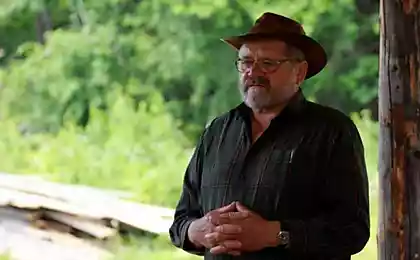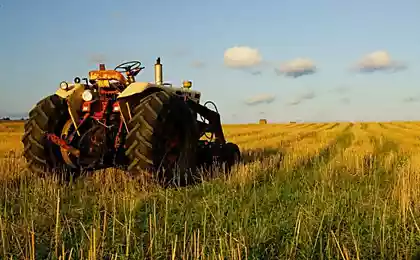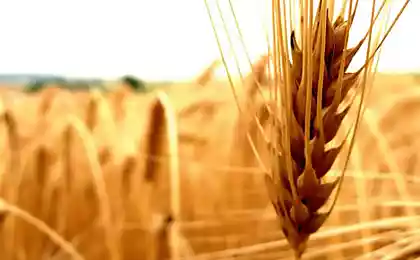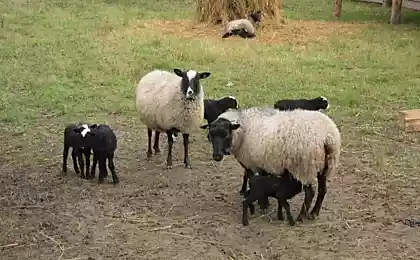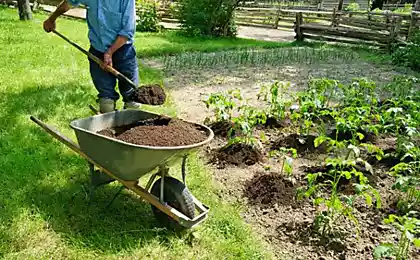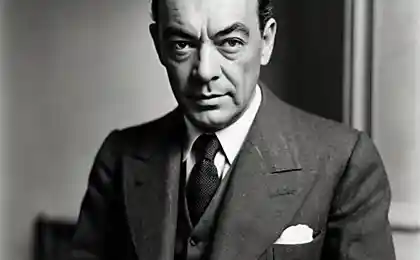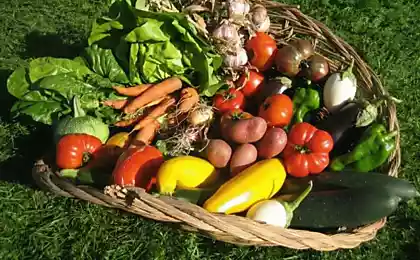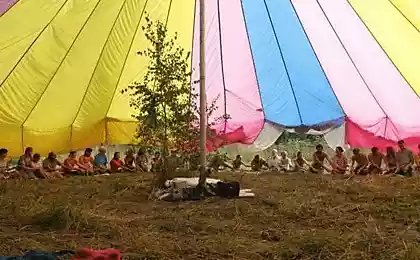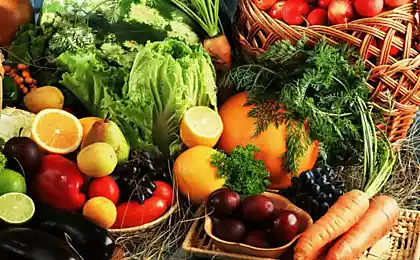580
The philosophy of permaculture
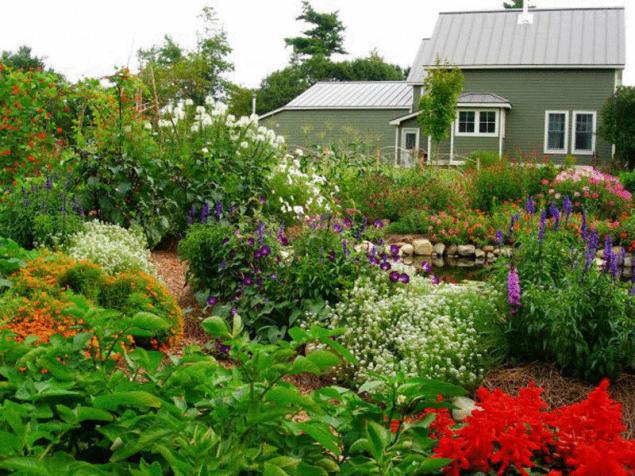
The philosophy of permaculture is a philosophy of cooperation with Nature, not against it. It is a philosophy which implies the a long and thoughtful observation and not a prolonged and mindless physical labor. It is a philosophy which implies the need to take into consideration all the functions inherent in plants and animals, instead of one-sided representation about them.
The philosophy of permaculture is a philosophy of cooperation with Nature, not against it. It is a philosophy which implies the a long and thoughtful observation and not a prolonged and mindless physical labor. It is a philosophy which implies the need to take into consideration all the functions inherent in plants and animals, instead of one-sided representation about them.
The founders of permaculture are considered Australian scientists, biologists, designers, practices bill Mollison and David Holmgren. Also in parallel to similar conclusions came the practice of natural farming Masanobu Fukuoka in Japan and Sepp Holtzer in Austria.
In Russia the first permaculturist we believe the most interesting person Nikolay Kurdyumov, the author of Smart giving.
"Permaculture" (from the English. permaculture — permanent agriculture — "Permanent agriculture") is a design system for creating a viable surrounding human environments. The term of the proposed Australian zoologist bill Mollison.
The principles of permaculture focus on the rational design of small-scale intensive systems that are effective for embedded work and use biological resources instead of fossil fuels.
Permaculture — what is it? Nowadays it is becoming quite clear that we are on the verge of the death of the Earth. She can't endlessly tolerate us generated air pollution and to meet the ever-growing hunger for energy and materials.
We are so wastefully expended oil and other fossil fuels that our agriculture on a calorie-products there are ten calories of energy expended. The use of organic methods significantly reduces the cost of energy and chemical fertilizers, and pesticides require large energy expenditures.
But traditional organic farms still use machinery and transportation, so energy is consumed more than produced.
The situation is simple in the farm where produced for every 10 calories we have consumed 1.In this case, the spent energy is almost entirely embodied in the work of farmers and their cattle.And herein lies the problem: we can only choose between consumption of large amounts of energy and hard work. There is a third way, which we call permaculture. Ideas and skills that are used here are not unique to her.
Some of them are traditional agricultural methods, others require the application of modern science and technology.
What is it really unique is that is built like ecosystems — natural communities of wild plants, such as forest, meadows and swamps. Imagine a real untouched forest.It has a canopy of tall trees, a lower layer of trees, high shrubs, low shrubs, herbs and creeping plants, and finally, mosses, and vines, which can be found on each of these levels.The production of forest plant material is much more difficult than, say, a wheat field that has only one level, with a height of about half a meter.
If the forest were growing only edible plants, whatever there was abundance! And how the harvest would surpass the collection of a wheat field! So wonderful to grow plants, forest required nothing more than sun, rain and rocks, from which it creates its own soil. In comparison with forest, the wheat field is in a deplorable position. It is necessary to plow, cultivate, seed, fertilize, weed, destroy pests.
All this requires the expenditure of man's energy and machines.If we could create such an ecosystem, like a forest, but with edible plants, we would have been without oil. The basic idea of permaculture lies precisely in creating the ecosystem of edible plants.
How to implement this principle
The forest is so productive and self-sufficient, precisely because of its diversity.
It is not in the number of species and number of useful connections between them. We're brought up to constantly repeat phrases like "the law of the jungle", "survival of the fittest" and consider the struggle a natural way of interaction between wild plants and wild animals.
In fact, the coexistence is also important, especially if you pay attention to the relationship between the different types.Plants remove various chemical elements from the soil, and when their leaves fall or the whole plant dies, fungi and bacteria do chemical elements available to living plants.Insects feed on pollen and, in turn, pollinate the flowers.
Many fragrant plants emit chemicals that are very useful for other plants.The more we look, the more visible we are, the system of connections.
Ecosystem of edible plants permaculture can remind or not to remind the forest.
But there is always some system of relations in which what makes one plant serves the needs of the other.It is achieved by deliberate organization.
A useful relationship between plants you can install, if you position them correctly relative to each other. Medicinal herbs, for example, have a beneficial effect on other plants if they are in close proximity to them. Therefore, permaculture is a system of organization.
Her goal is to use the organizing power of the human mind to replace muscle power or energy of a natural fuel. This idea can be applied to everything that we do, and not only the cultivation of edible plants.
Originating as permanent agriculture, permaculture already and now includes construction, water treatment, financial system, social relations and much more — in short, a reasonable organization of sustainable environment of human habitation.
Can permaculture feed the world? One thing is certain: modern agriculture, on a commercial basis, will soon be unable to feed her.Like any modern economic activities, agriculture is completely dependent on fossil fuels, and it would soon be quite consumed.
With the increase in fuel consumption inevitably increases, and the level of pollution that is also not controllable. The greenhouse effect occurs mainly due to excessive combustion of fossil fuels, is just one form of this pollution.
Modern methods of food production, as in the industrialized Northern hemisphere and the agricultural South, destroying the planet at an alarming speed.The consequences of erosion, drying out of the soil and its salinity, taken together, mean that by 2020, we will have to feed the increased twice the Earth's population, using only half of the total current arable land.
Permaculture, in contrast, contributes to sustainable development.But how she can produce enough to feed all of us? First, by receiving different types of products from plants and animals which, in conventional farming, yield only one type; also, by selection of such species, which have high yields and fertility.
Secondly, by finding a use that was previously considered waste and pollution and were thrown out.Thirdly, the application of parusnosti. Instead of growing one crop on a specific plot of land, you can grow two, but at different levels. This will increase the yield.
Fourth, concentrated on horticulture and gardening, not farming. It will justify itself, given the greater productivity of small, carefully cultivated space.
Fifth, growing a variety of plant species, including a high percentage of trees. When a sufficient variety of species, crop failures, one of them will be significant.
In addition, the loss of crops will become less likely, as the earth will possess more vitality and capacity for rapid recovery, like natural ecosystems.In particular, a large number of trees protects the earth from erosion, desiccation and salination.
This may apply in the tropics, but can it here?
Many farmers often point to the impossibility of growing in our climate, all those different kinds of plants that grow in warmer parts of the world, which limits the possibilities of permaculture.
This is true as it is true that this fact imposes constraints on traditional agriculture.In our climate, in any system, you can grow far fewer types of plants than, say, in the tropics. The difference, in fact, exists between the tropics and temperate climate, but not between agriculture and permaculture.
The activities of Robert HART, Arthur Hollins, Bruce Marshall is convincing enough evidence that the permaculture can grow in our climate.
Isn't it just a method of organic cultivation?
No. Organic farming is a method at the time, as permaculture is a system of organization.They complement each other and each of them is an important part of a more General system.
Between them there is also a difference in approach.
At that time, as a farmer using chemical fertilizers, trying to "make do" with the one-crop farmer. uses a variety of culture and every year, according to the principle of rotation, changes the landing place of a culture.
Proponents of permaculture, I prefer to grow up various cultures always in the same place at the same time. This approach is much more like a natural ecosystem and allows you to make important connections between plants.
The second difference is that in organic agriculture is completely no interest in methods that do not require digging of soil for perennial plants, which is the basis of permaculture.It is an essential part of the strategy of the future, suggesting low energy costs. The most important is that permaculture is suitable not only for obtaining food. We have already seen that its principles may find application in social and economic fields.In fact, they can be successfully used in any field of human activity.
How farmers will be able to afford to go to permaculture? Planting trees is an investment, however, it will take several years before this investment starts to generate revenues.
Many farmers already burdened with debt, and most of them work for very little profit if at all possible to speak about profit — so how can they afford such expenses?
But, first, permaculture helps you to save money in a very short time.
For example, was developed by Bruce Marshall, a way to improve the hilly land is much cheaper than traditional and, however, it significantly increases the soil fertility. And the money you can make a lot of changes in the economy.
Second, it is not necessary to implement drastic changes.
Planting of trees and other changes can be made gradually, over several years, in accordance with a carefully developed but flexible plan, so that, thanks to previous improvements, it was possible to Finance the next.
A similar technique is called "rolling permaculture". Thirdly, you can get to work on the system of subsidies.
Fourth, the SPO program gives farmers the opportunity to gain more money for their products than if they had acted through traditional distribution channels.
Can urban residents to receive the same benefit from permaculture? Yes, all four points equally apply to the urban areas.
Permaculture can, to begin quickly to reduce your spending on food and heating, and later will happen great changes; the search for available subsidies will lead you to the most unexpected and pleasant discoveries, and participation in the program, SPO will cost you much cheaper than buying products in stores. published
Source: zemledel.org/stati/permakultura/filosofija-permakultury.html
